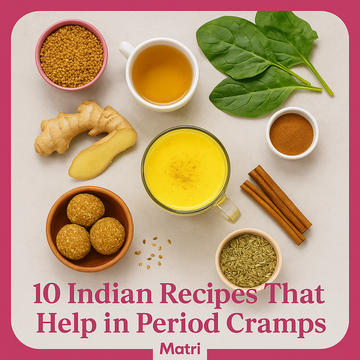Using a menstrual cup can be a game-changer for many people, providing a sustainable and reliable option for managing menstruation. However, many users struggle with properly folding their menstrual cup for easy insertion. In this comprehensive guide, we will walk you through five different methods for folding a menstrual cup, giving you a clear understanding of how to fold it step by step. Whether you’re a first-time user or have been using a menstrual cup for a while, knowing the best fold for menstrual cup insertion can make the process much more comfortable and efficient.
Why Is Folding the Menstrual Cup Important?
Folding a menstrual cup correctly is crucial for proper insertion and leak prevention. When the cup is folded correctly, it creates a smaller, more compact shape that is easier to insert. Once inside, the cup will open up to form a seal against the vaginal walls, ensuring it stays in place and prevents leaks. Choosing the right fold also influences how comfortable the cup will feel, which is essential for long-lasting comfort.
Still unsure if a menstrual cup is the right choice for you? Learn more about the advantages and disadvantages of using a menstrual cup to make an informed decision for your body and lifestyle.
5 Popular Menstrual Cup Folding Techniques
Here are five common menstrual cup folding techniques you can use, each offering different benefits depending on your preferences and comfort.
1. C-Fold
The C-fold is one of the most popular and easiest folding techniques. It is often recommended for beginners because it’s simple to execute and provides a good seal once inserted. To create the C-fold, pinch the top of the menstrual cup between your thumb and forefinger, then fold it in half to create a "C" shape. This fold reduces the diameter of the cup, making it easier to insert.
How to do the C-Fold:
- Hold the cup with your thumb and forefinger at the top rim.
- Fold it in half lengthwise to form a "C" shape.
- Lubricate the cup if necessary and insert it into your vagina, ensuring that it pops open to create a seal.
2. Punch-Down Fold
The punch-down fold is another favorite technique, especially for those with a high cervix or those looking for a smaller fold. In this method, you pinch the tip of the cup down into the base, creating a sharp point. This fold results in a very small opening that is easy to insert, and once the cup is inside, it will expand and seal correctly.
How to do the Punch-Down Fold:
- Hold the cup with your thumb and forefinger.
- Push one side of the rim into the center of the cup, forming a sharp point.
- Insert the cup, allowing it to pop open once it’s inside.
3. 7-Fold
The 7-fold is a less common but effective technique for those who prefer a smaller insertion size. In this fold, you create a seven-like shape by folding one side of the cup down and across to the other side. This results in a very tight, compact shape that can be easier to insert for some people.
How to do the 7-Fold:
Hold the cup with the rim facing up.
- Fold one side of the rim down toward the base and across to the opposite side.
- You should now have a shape resembling the number “7.”
- Insert the cup as usual and allow it to open fully inside.
4. Tulip Fold
The tulip fold is another method that is especially helpful for those who find other folds difficult to handle. It creates a shape resembling a tulip flower. To form the tulip fold, pinch the top of the cup, and then fold the edges of the cup toward the center. This fold creates a smaller, easier-to-insert shape that still opens fully once inside.
How to do the Tulip Fold:
- Pinch the top of the cup with your fingers.
- Fold both sides of the rim inward toward the center of the cup.
- This creates a smaller, tulip-like shape.
- Insert the cup and let it unfold to create the seal.
5. Origami Fold
The origami fold is similar to the C-fold but is a bit more intricate. This fold involves folding the cup into a tight, triangular shape, which can be very useful for people with smaller vaginas or those who prefer a tighter, more compact fold. This method can take a bit of practice, but once mastered, it provides a reliable option for insertion.
How to do the Origami Fold:
- Hold the cup upright with the rim facing you.
- Fold the cup in half to form a triangle.
- Fold the triangle again to create a smaller, more compact fold.
- Insert the cup as usual and let it expand once inside.
If you’re new to menstrual cups, don’t miss our easy guide on how to use a menstrual cup, covering insertion, removal, and cleaning tips in detail.
Menstrual Cup Folding Guide: Which Fold Is Best for You?
Each person’s anatomy is different, so the best fold for menstrual cup insertion depends on your body and preferences. If you're new to menstrual cups, it’s best to try a few different methods to see which one feels the most comfortable for you. Many people prefer the C-fold for its simplicity, but others might find the punch-down fold works better for them. The key is to experiment and find a method that ensures ease of insertion and a secure, leak-proof fit.
Dealing with period pain while using a menstrual cup? Explore the Matri Pro Pain Relief Device, designed to help ease menstrual cramps safely and effectively.
Menstrual Cup C-Fold vs Punch Down: Which One Should You Choose?
The choice between the C-fold and the punch-down fold often comes down to personal preference. Both folds are excellent, but the C-fold tends to be slightly easier for beginners because it’s quicker to master and doesn’t require as much precision. On the other hand, the punch-down fold is great for users who want a smaller, more compact fold for easier insertion, especially those with a high cervix. Ultimately, it’s worth trying both techniques to find the one that works best for you.
Struggling with leaks even after folding correctly? Understand the common reasons for menstrual cup leaks and how to fix them for a more secure and worry-free experience.
Frequently Asked Questions (FAQs)
1. What is the best fold for menstrual cup insertion?
The best fold for menstrual cup insertion depends on your comfort and anatomy. Many users find the C-fold or punch-down fold to be the most effective, while others prefer the tulip or 7-fold for smaller openings. Experiment to find the one that works best for you.
2. Can I fold my menstrual cup the wrong way?
No, as long as you are folding the menstrual cup into a compact shape that allows it to easily insert and open inside, it’s not “wrong.” The key is to find a fold that suits your comfort and helps with insertion.
3. How do I know if my menstrual cup has opened properly?
You can check by gently running your finger around the base of the cup. If it feels round and smooth without any folds or creases, the cup has opened properly. You should also feel a slight seal around the cup to prevent leaks.
4. Is the punch-down fold good for beginners?
Yes, the punch-down fold is a great option for beginners because it creates a smaller fold, which can make insertion easier. It may take some practice, but it’s an effective technique once you get the hang of it.
5. Can I use a menstrual cup if I have a high cervix?
Yes, using a menstrual cup is perfectly safe for people with a high cervix. If you have a high cervix, you may prefer certain folds like the punch-down or C-fold to make insertion easier. Additionally, you can choose a longer menstrual cup for a better fit.
6. How often should I change my menstrual cup?
It’s recommended to change your menstrual cup every 12 hours. However, this may vary depending on your flow. If you have a heavy flow, you might need to empty it more frequently. Always ensure the cup doesn’t overflow to avoid leaks.
7. Can menstrual cups cause vaginal infections?
No, menstrual cups do not cause vaginal infections when used properly. Always clean your cup thoroughly before and after each use and ensure it’s made from medical-grade silicone. If you experience irritation or discomfort, consult with a healthcare provider.






